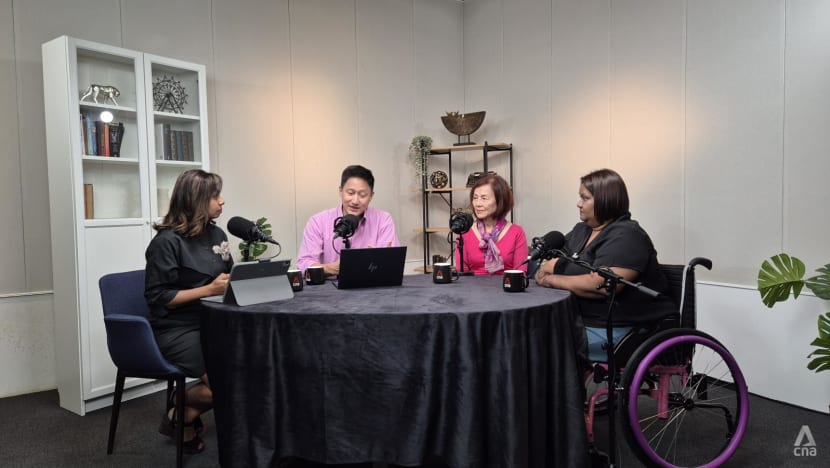Deep Dive Podcast: What will it take for companies to hire more disabled workers?
The Enabling Masterplan 2030 sets out a path towards a more inclusive society.
.jpg?itok=YGopmaUR)
CNA's weekly news podcast takes a deep dive into issues that people talk about at dining tables and along the office corridors. Hosted by Steven Chia and Crispina Robert.
The Enabling Masterplan 2030 aims to increase the employment of people with varying disabilities. What are the biggest challenges and what does it take to get more companies onboard?
Steven Chia and Crispina Robert speak to Ho Geok Choo, founder and CEO of Human Capital Singapore and DG Carole Ann, a multiple amputee who works at ServLink Technology Resources.

Here's an excerpt from the conversation:
Steven Chia: Carol, you are working now, but was it difficult for you to get a job?
DG Carole Ann: I'm quite lucky ... people whom I've worked with know that this had happened to me and started reaching out. One particular boss offered me an olive branch and sent me a JD (job description), because he knows what I can do.
"We know you don't have the limbs, but we want to tap on your brains", (he said). I was a manager so (I) know vision, KPIs, how to drive stuff in that sense. So they actually gave me an opportunity to give me a computer, set it up at home, and said, "You can work from home, we're not going to pressure you. We'll take it this year and see how much you can do." But at the same time, I own my disability, so I know what I need.
Crispina Robert: How did you manage to type? Did they have to have special equipment for you, or you had to source it yourself?
Carole: I knew I needed a keyboard specific (to my needs) ... not so much the numbers at the side, but more up, down, right, left and then the numbers on top would be fine. And I needed a keyboard with bigger keys, not small, because I'm going to use my stumps to type. SG Enable linked me up with (non-governmental organisation) Engineering Good at that time and a few other representatives. And I said, "I need to get back on the computer. This is what I want."
(So) they customised the mouse for me ... it's a trackball mouse ... I can't use the mouse like everybody on the right side. I need it in the front. Over the years, (I managed to) improve. So six months in, I started to do my first training.
A few months later, my boss started to compliment me saying, "You're typing faster, you are doing well!" I didn't expect it to be so good. And then slowly, before you know it, I'm independent already.
Crispina: She's very lucky in a way, and she's also very capable, so you have support, etc. But I'm thinking of the parent of a child who maybe is on the autism spectrum, for example. And I'm not sure (that) some people with disabilities might be so lucky, or be so capable, or even have enablers who can help? Geok Choo, what is the role of the (master) plan for people like that?
Ho Geok Choo: The plan actually focuses on three aspects. One aspect really is to continue to ensure that there is a chance for these PWDs to learn new stuff. The second one really has got to do with reaching out to the employers in the marketplace to assure them there are special programmes to help employers to embrace these people if they are willing to seek a job with them. And the third one really is preparing a crop of coaches. These coaches will journey with the PWDs, because the PWDs do need somebody to walk with them.













